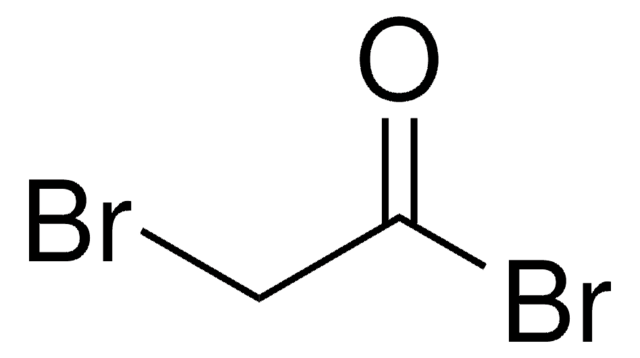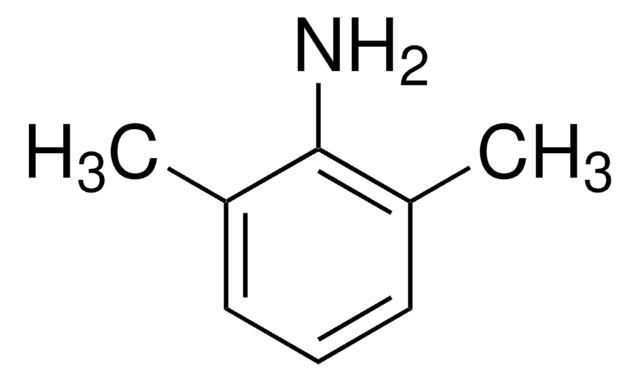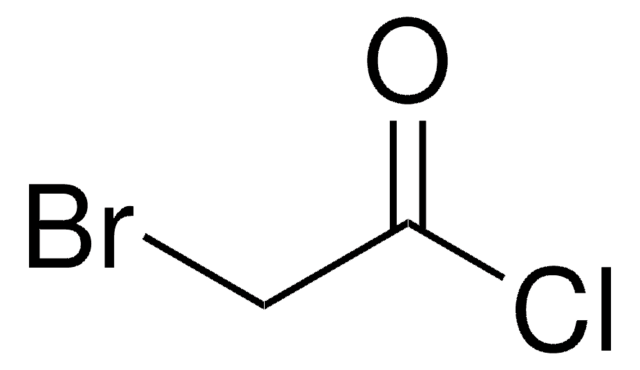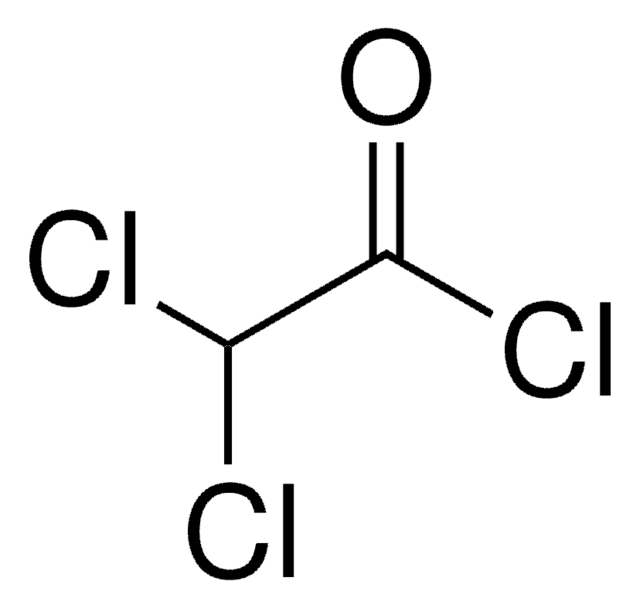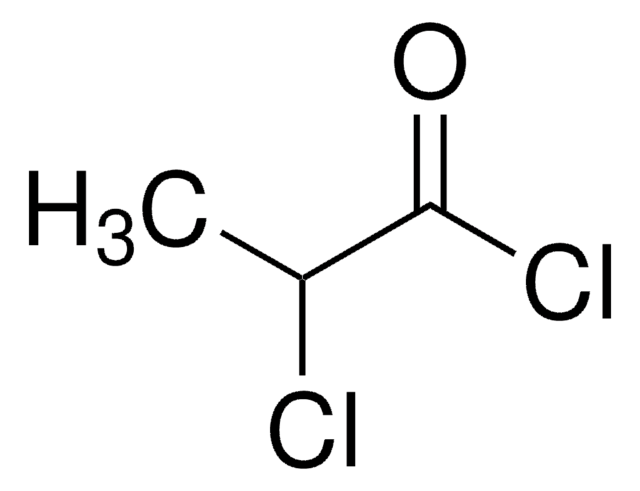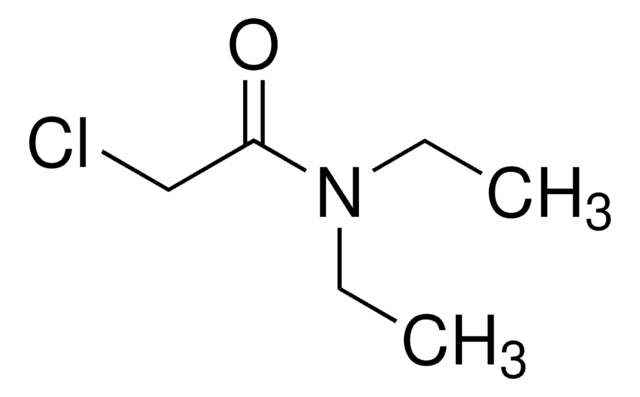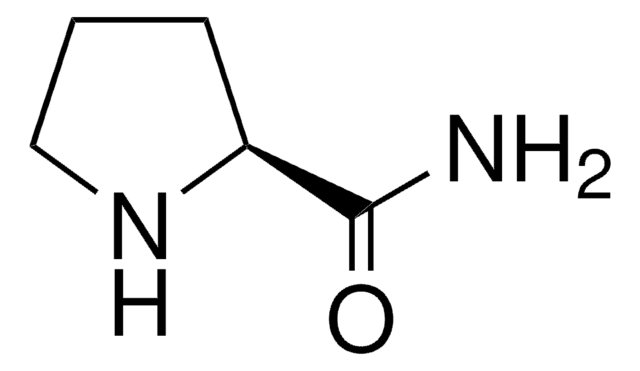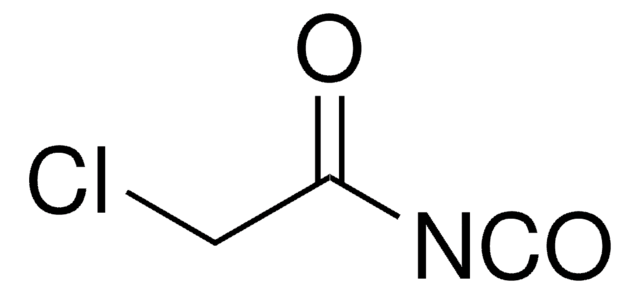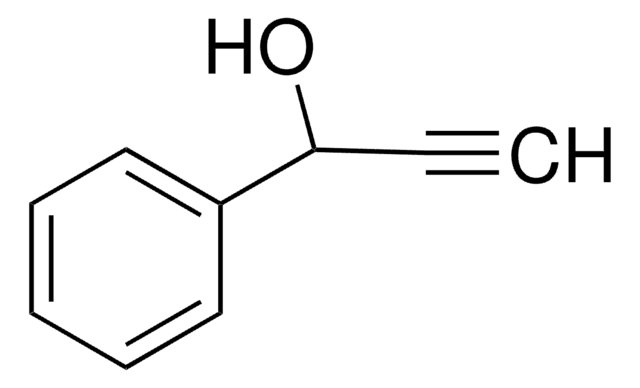104493
Chloroacetyl chloride
98%
Sinónimos:
Chloroacetic chloride
About This Item
Productos recomendados
vapor density
3.9 (vs air)
vapor pressure
60 mmHg ( 41.5 °C)
assay
98%
refractive index
n20/D 1.453 (lit.)
bp
105-106 °C (lit.)
mp
−22 °C (lit.)
density
1.418 g/mL at 25 °C (lit.)
SMILES string
ClCC(Cl)=O
InChI
1S/C2H2Cl2O/c3-1-2(4)5/h1H2
InChI key
VGCXGMAHQTYDJK-UHFFFAOYSA-N
¿Está buscando productos similares? Visita Guía de comparación de productos
General description
Chloroacetyl chloride causes the acylation of cyano-pyrazoline during the synthesis of secondary amine-substituted cyano-pyrazoline derivatives.
Application
signalword
Danger
Hazard Classifications
Acute Tox. 3 Dermal - Acute Tox. 3 Inhalation - Acute Tox. 3 Oral - Aquatic Acute 1 - Eye Dam. 1 - Skin Corr. 1A - STOT RE 1
target_organs
Lungs
supp_hazards
Storage Class
6.1A - Combustible acute toxic Cat. 1 and 2 / very toxic hazardous materials
wgk_germany
WGK 3
flash_point_f
212.0 °F - closed cup
flash_point_c
100 °C - closed cup
ppe
Faceshields, Gloves, Goggles, type ABEK (EN14387) respirator filter
Certificados de análisis (COA)
Busque Certificados de análisis (COA) introduciendo el número de lote del producto. Los números de lote se encuentran en la etiqueta del producto después de las palabras «Lot» o «Batch»
¿Ya tiene este producto?
Encuentre la documentación para los productos que ha comprado recientemente en la Biblioteca de documentos.
Los clientes también vieron
Nuestro equipo de científicos tiene experiencia en todas las áreas de investigación: Ciencias de la vida, Ciencia de los materiales, Síntesis química, Cromatografía, Analítica y muchas otras.
Póngase en contacto con el Servicio técnico